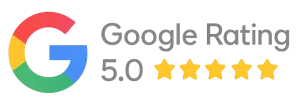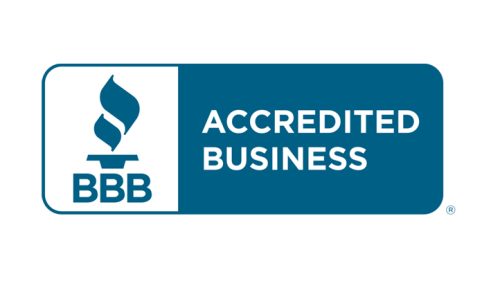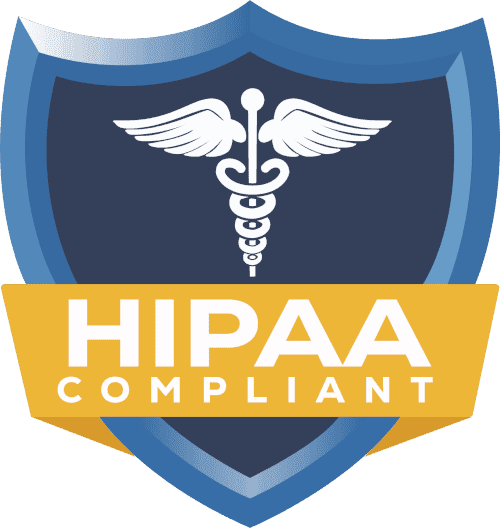Why CAQH Credentialing Is Essential

Introduction: Understanding the Role of CAQH in Provider Credentialing
CAQH ProView is one of the tools provided by CAQH (the Council of Affordable Quality Healthcare). This provider information portal is the central provider data portal through which clinicians can submit their practice and professional information on the same portal and share the information with various health plans and organizations. It saves time on redundant paperwork for symptom providers and practice managers, minimizes credentialing efforts, and provides the payers with an effective channel for finding licenses, education, work history, sanctions, and other important information. The CAQH mission aims at decreasing the administrative tension at the different levels of the credentialing lifecycle and supporting practices with an emphasis on patient care and not form-filling.
CAQH ProView is not a luxury resource but a mandatory element of the modern payer enrollment in the health system of the U.S.A. You must have the right and the CAQH profile active to be in-network, maintain clean directories, and make the processing of claims faster.
How CAQH Credentialing Works
CAQH ProView includes a central application folder. The providers or group administrators create a profile and upload supporting materials (licenses, diplomas, malpractice declarations, DEA registrations, and so forth) and subsequently issue authorization to a payer or hospital, or several to access the profile. Having the data provided, payers make decisions based on it to either include a provider in their provider network or disregard them. Primary source verification (PSV) normally accompanies the data encountered.
Significant stages of the CAQH workflow
- Save or take ownership of the ProView profile and enter demographic, education, work history, and practice-location information.
- Deliver documentations in the formats required, uploaded in sequence to be authenticated by the payers, not to mention the systems of CAQH.
- Grant the payers access to the profile and provide follow-up requests by payers.
- In order to be in a position to make sure that such information is current, re-attest in the required intervals.
Although it is basic in terms of general mechanics, every step must be of quality and at the appropriate moment, driving either an effortless enrollment process, or the stalling of a first gear.
Why Every Healthcare Provider Needs CAQH Credentialing
1. Involvement by insurance networks
The majority of business payers and multiple health systems utilize CAQH data in credentialing and directory population. A ProView profile that was not revised by a provider may not be registered in the payer directories or may require more time to join the panels, to access the patients, and achieve greater returns.
2. Compliance with payer alliances
CAQH is one of the reputable providers of data in the form of the source of information that payers require on a consistent schedule. Good CAQH documentation will avoid denials, audit flags or payer requests to conduct further checking, and this will create a sluggishness of the enrollment or claims procedure.
3. Improved correctness of billing and claims
The payer systems have appropriate provider taxonomies, addresses, NPI, and credential information, and therefore, opportunities for technicalities leading to failure of claim adjudication are minimized. CAQH helps to keep the synchronization of the information underpinning your practice and payers’ submissions of claims with the data, and improves turnaround time and reduces administrative detention.
In brief: CAQH reduces friction in three aspects of high value, i.e,. Access (on to panels), compliance (paying to rules), and revenue (cleaner, faster payments).
Benefits of Maintaining an Active CAQH Profile
An active CAQH ProView profile will give several benefits in practice:
- Faster payer enrollment. The quicker disbursement that the payers who accept CAQH templates are able to pass at a quicker rate is that much of the information they need is already planned and (where required) examined. This saves time-to-panel and helps the providers get payments faster.
- Less time on credentialing. The complete and fully developed profile will minimize the number of papers sent back or ordered. That reduces the working turnaround time of administration and workforce working hours of the healthcare provider to meet the enrollment.
- Optimal renewals and updates. The CAQH maintenance process (the regular assurance that your profile is right) is all about maintenance events, reminding the provider to revise them, and your reimbursement process would not be disrupted by the lapses in creating an appropriate profile.
- Improvement in the quality of data for the payer. CAQH has Provider Data and Primary Source Verification services, which enable verification of consistent records to make decisions on payer directories and credentialing, which are favorable to both the payers and the providers.
The advantages are the saving of time that is usually wasted in search of paperwork, surprises that could arise during the credentialing process, and building a better revenue cycle.
Common Challenges Without CAQH Credentialing
Although CAQH is not the only route towards enrollment, it is inconvenient to work without a working ProView profile:
- Administrative hassles and claims denial. Their mistakes in the payer records and the practice records (NPI, taxonomy, address) may lead to the denial or postponement of the claim since the payers will verify the credentials.
- Slower reimbursement rates. The payers may be dissatisfied with some further verification or a full corporate manual credentialing packet, to results in paneling that is significantly slower, i.e., causes delays in patient access and revenue.
- Increase in administrative burden. Such procedures, where a central point of confirmed documentation has not been established, will persist in maintaining the same paperwork in all payers, a waste of time for both clinical and administrative staff.
- Greater audit vulnerability and Directory vulnerability. Not up-to-date information in directories or on payer files increases the chances of audit questions and patient access complaints that may hit the reputation and adherence to oversight badly.
These are a few of the challenges that must not be allowed, and this is one of the key reasons why CAQH ProView would be adopted as a baseline credentialing tool in the current practices.
Attestation & PECOS: Two Timelines You Must Track
Two phases of maintenance are likely to feature workaround providers:
CAQH re-attestation: In CAQH Proview, providers are supposed to re-attest regularly (typically 120 days). The more frequent the attestation of the profile of the provider, the more the payers will get the chance to update the information and use it to reproduce their claims and directories. It is the lack of attestation windows that may cause the profile to drift into the status and trigger the payer follow-ups or delays.
Medicare enrollment revalidation (PECOS): PECOS (Provider Enrollment, Chain, and Ownership System) usually responds to Medicare enrollment revalidations and is conducted in a cycle of five years (and three years, in the case of DMEPOS suppliers). It is registered and revalidated in Medicare using the system PECOS, and this is why the failure to revalidate within the scope of time can hamper a Medicare billing license. Both timeline problems are to be addressed in advance, as CAQH and PECOS are different systems.
To avoid coverage and payment gaps, it will be significant to disconnect the two calendars, CAQH and PECOS, the Attestation window, and the revalidation window, respectively.
How Credex Healthcare Simplifies the CAQH Credentialing Process
Credentialing is not a sheet to be filled; it is a workflow that is operational and gets revenue, compliance, and access on the part of patients. The approach taken by Credex Healthcare on CAQH credentialing is three parts and aimed at speed, precision, and quantifiable ROI.
1. Application support on an end-to-end basis
We handle the whole ProView lifecycle profile creation/claiming, document gathering, and formatting, CAQH-specified uploads, and payer approvals. CAQH rejections are minimized, and review times are shortened through proper preparation.
2. Immediate attestation and revalidation monitoring
Our systems track our account sections and CAQH attestation windows, and the date of Mc PECOS revalidation and reminders are sent, and update processes are initiated to make sure that profiles do not expire. That avoids unexpected disrupted payer processing and billing with Medicare.
3. Payer-specific follow-ups and appeals
Various payers request various supporting documentation and have also different ways of credentialing workflow. Credex takes care of payer-specific follow-ups and additional verifications and, in the event of a need, claim appeals associated with credentialing disparities, so your staff doesn’t need to use their time fixing errors.
4. PSV coordination & document standardization
We normalize file formats and name conventions and make sure that supporting documents are up to primary source verification in terms of compliance. That reduces the rate of rejection and matches profiles to the payer verification requirements.
5. Open reporting and measurement of ROIs
We show straightforward dashboards of time-to-panel improvements, resubmission reduction, and attestation compliance to demonstrate to the leadership the value of revenue protection in managed credentialing.
Practical Steps for Practices
In case you run CAQH in-house, use the following operation controls:
- All the supporting documents should be centralized in a secure folder, and they should have high quality scanned copy.
- There should be one credentialing owner for one provider to avoid duplication of work.
- PECOS revalidation dates and Track CAQH attestation windows, and your calendar system with auto-reminders.
- Normalize document formats (PDF/A, where feasible) and verify file size prior to uploading.
- Use the CAQH Practice Manager Module in the event that you manage several provider profiles in order to minimize repetitive entry work.
These steps will save time and minimize errors that affect payer enrollment and payment.
Frequently Asked Questions (FAQs)
What is CAQH credentialing, and why is this required of providers?
CAQH credentialing is based on CAQH ProView to gather and distribute provider information to payment sources. It is utilized by providers to access information on how to streamline credentialing, cut unnecessary paperwork, and meet payer verification requirements. Much of the commercial payer and health system uses ProView data when performing enrollments and updating directories.
Is it a requirement that all healthcare providers should enroll in CAQH?
CAQH is not necessary in all single payers; however, most commercial plans, hospitals, and large provider groups utilize ProView. Registration is generally advised as it gathers all the information in one place and expedites the registration process where the payers accept CAQH profiles.
What is the payer enrollment value of CAQH credentialing?
CAQH and simple access to the rudiments of a constantly, pre-formatted, latent data supply removes manual duplication of the form and accelerates checking. Payers are able to accomplish credentialing decisions quickly when the supporting documents are precise and confirmed following the due date.
Is CAQH credentialing applicable to several providers by Credex Healthcare?
Yes. Under single-provider practices and large groups, Credex handles transactions with groups, group tools, and standard processes operating to minimize data entry and facilitate the multi-clinician attestation.
What is the duration taken by the CAQH credentialing process?
The length of time to approval depends on the payer, completeness of the documentation submitted, and the need to verify the primary source of the information. Correct preparation, clean upload, and proactive follow-up are effective measures that help to reduce average paneling times.
Conclusion
CAQH ProView is not just a form portal, but a strategic program that enhances easier access to payer networks, decreases credentialing, and is a protective tool to secure revenue because it assists in making sure that claims are handled properly. However, similar to any system, CAQH can always provide value when the profiles are correct, timely attested, and aligned with other enrollment systems such as the PECOS of Medicare.
When the credentialing and payer enrollment are robbing patients of care, or revenue is being delayed, Credex Healthcare can intervene. We integrate compliance-first, proactive maintenance, and payer-specific intelligence to expedite enrollment, minimize denials, and secure the cash flow of your practice.
Collaborate with Credex to make credentialing a liability that is eliminated as a stable operating process. Get in touch with us, and we will help you create a CAQH and payer-enrollment program that meets the size and objectives of your practice.



















